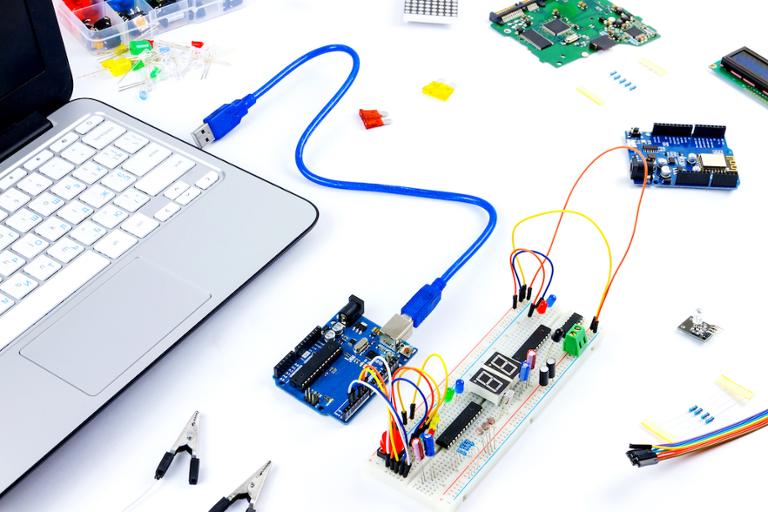
From your car dashboard to your microwave, the world around you is sprinkled with embedded systems powered by microprocessors and microcontrollers. As consumers continue to embrace “smart” devices, the need for technologists who have mastered embedded hardware and software will only increase.
And it’s not just the consumer realm: Embedded devices are present in pretty much every industry, from manufacturing to medical. Companies such as GE have wholeheartedly embraced weaving sensors and SoCs into jet engines and other machinery that powers the world.
For developers and other technologists interested in this segment, there are a few key things to consider. First and foremost, embedded systems often don’t have screens; and even if they do, there’s usually no need for complex UI and UX. User interactions and flow are often very different than what you would find in, say, a consumer mobile app (unless the embedded system outputs to a custom-made app, of course). The software can end up interacting with complex, customized, and sometimes low-power hardware.
The bottom line is, if you aspire to become an embedded-systems software developer, you’ll almost certainly need to learn a lot about hardware, as well. Successful developers in this arena might supplement their software learning with knowledge of electronics and components. Many newer technologists have begun to master embedded systems by playing around with Raspberry Pi (here’s a quick walkthrough of Raspberry Pi development).
And on the software side of things, which programming languages should you learn? IEEE Spectrum recently ran its annual analysis of top programming languages for the web, mobile, enterprise, and embedded arenas. Here are its top languages for embedded systems:
An aside about IEEE’s methodology: It pulls 300 programming languages from GitHub, then narrows that down to the 52 that earned the most search results in Google. Those 52 are subsequently analyzed using 11 metrics, including data from Twitter, GitHub, and Stack Overflow, in order to arrive at IEEE’s aggregate score. As previously mentioned, the organization then does separate “cuts” for mobile, web, enterprise, and embedded.
As with so many other arenas, Python, C, and C++ are immensely useful when it comes to embedded systems, although many lesser-known languages such as Elixir and Ada are also utilized in this context. Keep that in mind if a career pathway in embedded systems interests you; some of the languages you learn in order to work with a “smart” device might serve you well if you move laterally into mobile, enterprise, or broader web work.


